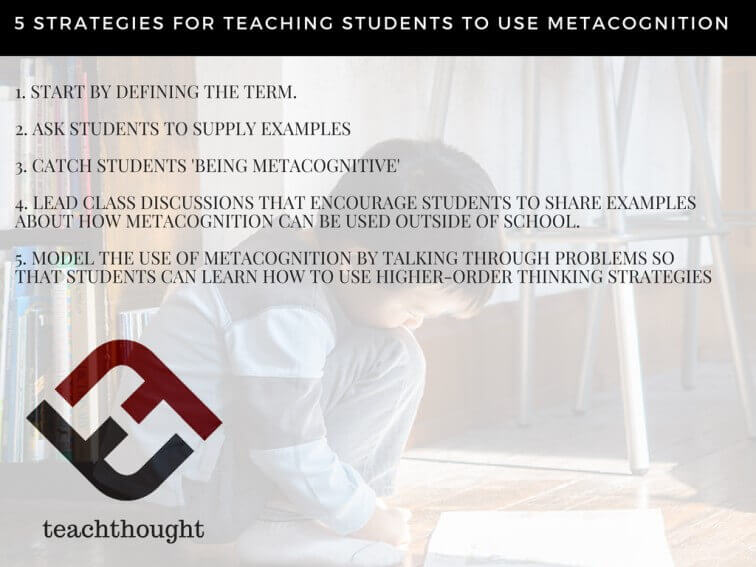
How To Teach Students To Use Metacognition
contributed by Donna Wilson and Marcus Conyers
As educational researchers, we have seen that by empowering all students with the metacognitive and cognitive skills they need to achieve in school.
With their application, schools can more consistently achieve the goals of the Every Student Succeeds Act (ESSA) to improve both excellence and equity. Over the past two decades, we have been inspired by the positive results that have been achieved by educators who have put our frameworks for teaching students metacognitive skills into practice in their classrooms and schools.
Metacognitive skills enable students to regulate their thinking and to become independent learners who can enhance their school and life experiences. Wherever the ambitions of our youth lead them, they will benefit from being able to solve problems creatively, think analytically, communicate effectively, and collaborate with others. As we conducted research for our latest book, we found that studies simultaneously indicate that metacognition is one of the most important skillsets students need, yet often is not taught.
See also 20 Types Of Questions To Teach Critical Thinking
When students are metacognitive, they can take a step back and observe their thinking. Sometimes this is called the reflective process. When using this approach, they might ask themselves questions such as, “What is the problem to be solved? How should I solve the problem? How well am I doing? How well did I do? How can I do it better the next time?” The metaphor we developed as a way to help educators teach metacognition to children and youth across grade levels is that of ‘driving your brain.’
Teaching students to drive their brains and become self-directed learners can be compared to driver’s education, in which students receive explicit instruction on how to guide their thinking, when to slow down, when it’s okay to speed up, and how to avoid wrong turns.
Many students yearn for the day they will get their driver’s license, but developing the mindset and ability to take charge of their learning will take them further in life than the keys to any car. And younger students don’t have to wait until they are old enough for driver’s education to take ‘brain-driving lessons.’ They can and should start learning about metacognition at an early age and apply it across all content areas and in life lessons.
5 Practical Strategies for Explicitly Teaching Students to Use Metacognition
1. Start by defining the term
We recommend the simple definition “thinking about your thinking as a pathway to better learning.” Especially with younger students, a metaphor such as driving their brains concretizes this abstract concept.
2. Emphasize the benefits
Early in the discussion about metacognition, ask students to describe the benefits and supply examples of driving their brains well. For example, sometimes we might need to review a reading passage to make sure we understand it, or jot down and organize notes for an essay instead of getting stuck on how to start writing. In communication with others, it is important to think before you speak so as not to risk hurting someone’s feelings.
3. Point it out organically
Catch students being metacognitive, perhaps when they reflect on their individual learning or engage in metacognitive discourse in class. Celebrate the use of this important skill in large and small groups as a way to underscore the many ways this approach comes in handy at school and in other aspects of life.
4. Discuss its usefulness beyond the classroom
Lead class discussions that encourage students to share examples about how metacognition can be used inside and outside of school. When Donna teaches metacognition to children in elementary school, she encourages them to explain how their parents might use this skill at work. High school students might think about applying metacognition in their jobs or in personal relationships.
5. Model metacognition
Model the use of metacognition by talking through problems so that students can learn how to use higher-order thinking strategies by listening as you problem-solve aloud.
The strategies shared in this blog post are adapted from the book Teaching Students to Drive Their Brains: Metacognitive Strategies, Activities, and Lesson Ideas (ASCD, 2016).
Donna Wilson, Ph.D., is a psychologist, professional developer, and author. Marcus Conyers is an author, professional developer, and doctoral researcher at the University of Westminster in London, England. Their latest book is Teaching Students to Drive Their Brains: Metacognitive Strategies, Activities, and Lesson Ideas (ASCD, 2016). They are co-founders of BrainSMART, Inc., and the Center for Innovative Education and Prevention (CIEP). Learn more about their work at www.brainsmart.org
